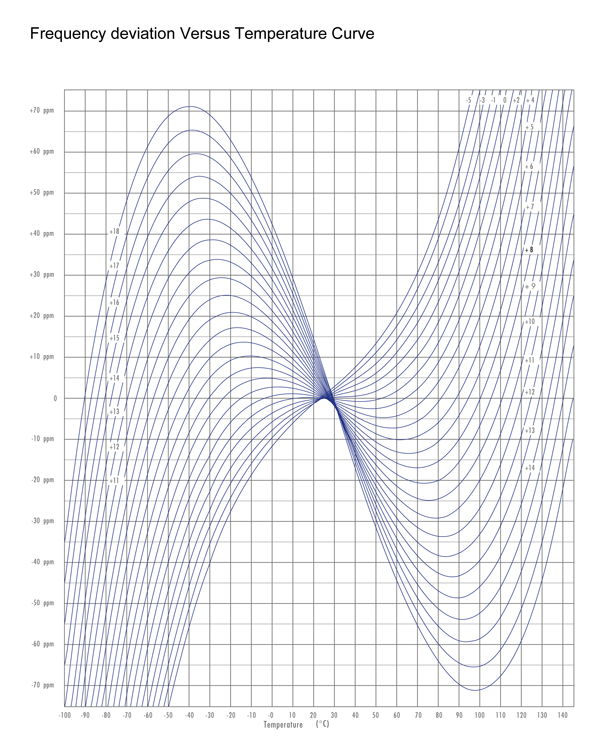Aging
The relative frequency change over a certain period of time and is typically expressed as a maximum value in parts per million per year (ppm/year). Typically, aging is computed within the first 30 days to 90 days and predicted exponentially over a longer period usually a year.
Drive Level
Drive level is the level of power dissipated in the crystal as a result of the operating circuit. Rated or test drive level is the power at which the crystal is specified and any deviation from the rated level will effect the crystal performance; therefor the actual drive level should reasonable duplicate that specified. AT – cut crystals generally can withstand a considerable overdrive without physical damage, however the electrical parameters are degrated at excessive drive
Equivalent Series Resistance (ESR)
For crystal units designed to operate at series resonance, ESR is the equivalent ohmic resistance of the unit when operating in the specified crystal impedance meter adjusted for the rated drive level and tuned to the specified crystal frequency
Frequency Tolerance
The maximum allowable frequency deviation from a specified nominal frequency at ambient room temperature (25°C ± 2°C). Frequency tolerance is expressed in parts per millions (ppm).
Insulation resistance
Resistance between crystal’s leads, or between lead and case (metal case). lt is tested with a DC voltage at 100V±15V and insulation resistance is in the range of 500M Ohms.
Load Capacitance (CL)
This is an external capacitance which sets a point on the reactance curve at which the crystal will resonate. It is normal to refer to crystals which are operated with a small value of CL as “parallel resonant” and to those which are not as “series resonant”
Nominal Frequency
The frequency for which the crystal/oscillator is designed and to which it is tuned.
Operating Temperature Range
This is the temperature range over which the quoted temperature stability is specified
Operation Mode
The quartz crystal could operate at its Fundamental mode or harmonic modes. The fundamental mode is always the preferred oscillating mode. Odd harmonics such as 3rd, 5th, 7th, etc. are overtone modes.
Operating Temperature Range
This is the temperature range over which the quoted temperature stability is specified
Pullability
The pullabilty of a crystal refers to a crystal operating in the parallel mode and is a measure of the frequency change as a function of load capacitance. Pullability is important to the circuit designer who wishes to achieve several operating frequencies with a single crystal by means of switching various values of load capacitance
Shunt Capacitance (Co)
The “static capacity” or shunt capacity of the electrodes, the holder and the leads. It is usually measured with an ungrounded case
Spurious Response
It is also possible for a crystal to vibrate at a frequency that is not related to its fundamental or overtone frequencies. Such undesired frequencies are referred to as spurious responses.Our processes are designed to minimise (not eliminate) the spurious responses and maximise the crystal activity at the desired frequency. The circuit designer should further guard against spurious responses by ensuring that the oscillator feedback circuit achieves its highest gain at the desired operating frequency
Storage Temperature Range
The temperature range in which the crystal can be stored without damage,i.e. it will resume operation as normal once it is restored to within its operable temperature range
Temperature Stability
The stability tolerance is the maximum allowable deviation from the nominal frequency over a specified temperature range and expressed in terms of ppm. This factor is dependent upon the angle of cut, see AT-cut temperature curve below.

Follow HMI On Social Media
HMI HQ
Grote Steenweg 36,
2260 Westerlo, Belgium
Phone: +32 14 54 89 55
Email: info@HMinternational.be
Web: hminternational.be

